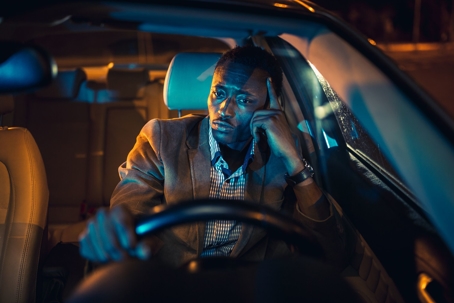At one time or another, most drivers have probably found themselves driving when they were too drowsy to continue. Eyelids feel like sandbags and the driver desperately flexes every facial muscle just to keep their eyes open a few seconds longer. Perhaps they close their eyes, just for an instant, not realizing the dangers of drowsy driving.
According to the National Safety Council, more than 40% of all drivers admit to falling asleep behind the wheel at some point in their lives. A study by AAA goes as far as to say that accidents caused by drowsy driving are 3.5x higher than reported. If AAA is correct, drowsy driving accounts for 1 in 20 car accidents in the United States.
Why Drowsy Driving Matters
Drowsy driving is nothing to joke about. When a driver moving at 70mph closes their eyes for a single second, they’ll find themselves more than 100ft away from where they started. There’s no telling what might happen in that space. That might mean striking another car, an animal, or even a pedestrian.
Drowsy driving is most common among second shift workers heading home and people who get less than six hours of sleep per night. Males under 30 are most often responsible for drowsy-driving accidents.
While drowsy driving accidents often occur between 10 PM and 8 AM, drowsy driving can strike at any time of day. Seniors are more likely to fall asleep at the wheel in the mid-afternoon.
Understanding Drowsy Driving Accidents
Most drowsy drivings occur at night and most of those cases occur on long, empty stretches of road. Quiet highways, interstates, and rural roads are prime areas to encounter a drowsy driver.
Without the stimulation of nearby traffic or traffic lights, tired drivers tend to enter a sort of autopilot where they barely maintain control of the vehicle so long as nothing unexpected happens. This often results in unmonitored speeding as the driver is no longer paying attention to their surroundings.
An alert driver typically slams the brakes when they realize a crash is imminent. That is not the case with drowsy drivers. A driver in a state of “micro-sleep” exhibits symptoms similar to a drunk driver. A drowsy driver’s body is relaxed and doesn’t tense up at the moment of impact. Because of this, drowsy driving accidents tend to cause more damage to the cars as the drowsy driver might be speeding and usually doesn’t brake.
The results are tragic. Accidents involving drowsy drivers can look shockingly similar to a drunk driving accident. On average, drowsy driving accidents are responsible for around 1,500 deaths and more than 70,000 injuries each year.
Risk Factors for Drowsy Driving
Any sign of sleepiness at the wheel is a sign of drowsy driving. A few early warning signs of drowsy driving include,
· Yawning
· Struggling to keep eyes open
· Driver realizes they were daydreaming
· Driver’s head lulls downward, toward the wheel
· Following too closely
Any driver who notices this behavior should pull over as quickly as possible. If a passenger notices their driver exhibiting symptoms of drowsy driving, they should demand the driver pull over as soon as it is safe to do so. Noticing and acting on these early symptoms can prevent more reckless drowsy driving, such as,
· Drifting out of lane or onto rumble strips
· Speeding
· Driving with eyes closed
· Missing turns
· Collisions with other vehicles or static objects.
An alert driver would not normally collide with a signpost or a wall, even if they weren’t paying attention. However, a drowsy driver with their eyes closed is a different story. Failure to notice an oncoming fixed object is especially dangerous and could result in an overlap crash, one of the deadliest kinds of car accidents.
Preventing Drowsy Driving
Coffee: Some drivers believe that when they’re feeling drowsy, they should get to the nearest gas station, grab a cup of coffee and get back on the road. What these drowsy drivers might not realize is that the caffeine in coffee does not take effect for at least 10-20 minutes. Now, the driver has a scalding-hot distraction in their hand, and they’re still struggling to stay awake.
Medication: When medication commercials advise that users not drive or operate heavy machinery, they mean it. No one should get behind the wheel of a motor vehicle while under the influence of a sedative. It sounds simple, but those who need regular medication may not be fully aware of which drugs cause severe side effects.
Proper Sleep: Obviously, one of the primary reasons for drowsy driving is a lack of sleep. The American Academy of Sleep Medicine suggests that adults should get at least seven hours of sleep each night. The best way to prevent drowsy driving is to set a bedtime and stay well-rested.
Don’t Drive Alone: It’s difficult to fall asleep when there’s a passenger on board. One of the best ways to stop a drowsy driving incident in progress is to have a passenger who is awake, alert, talkative, and ready to intervene. The mental power needed to respond in a conversation is often enough to keep drivers safe until they reach their destination. Likewise, if the passenger is capable, they may want to switch seats and let the driver rest.
If you or someone you love suffered serious injuries at the hands of a drowsy driver, you might have a case. If you’d like an experienced Oxnard attorney from Schurmer Reese Davies to evaluate your claim, please don’t hesitate to send us an email or call (805) 470-1628.

